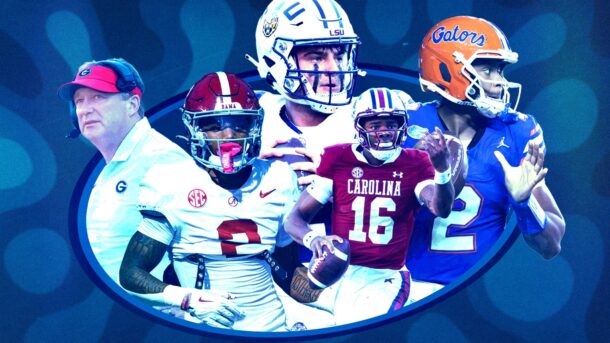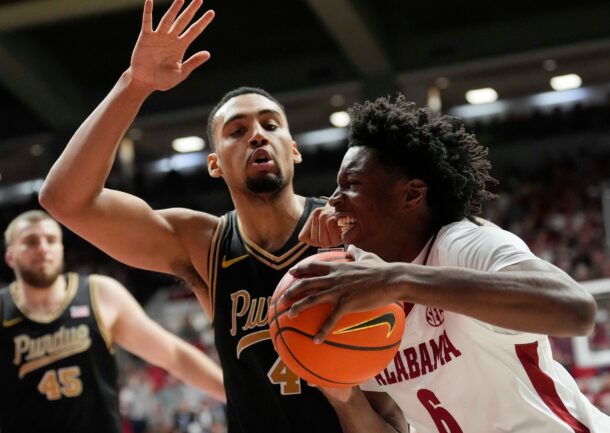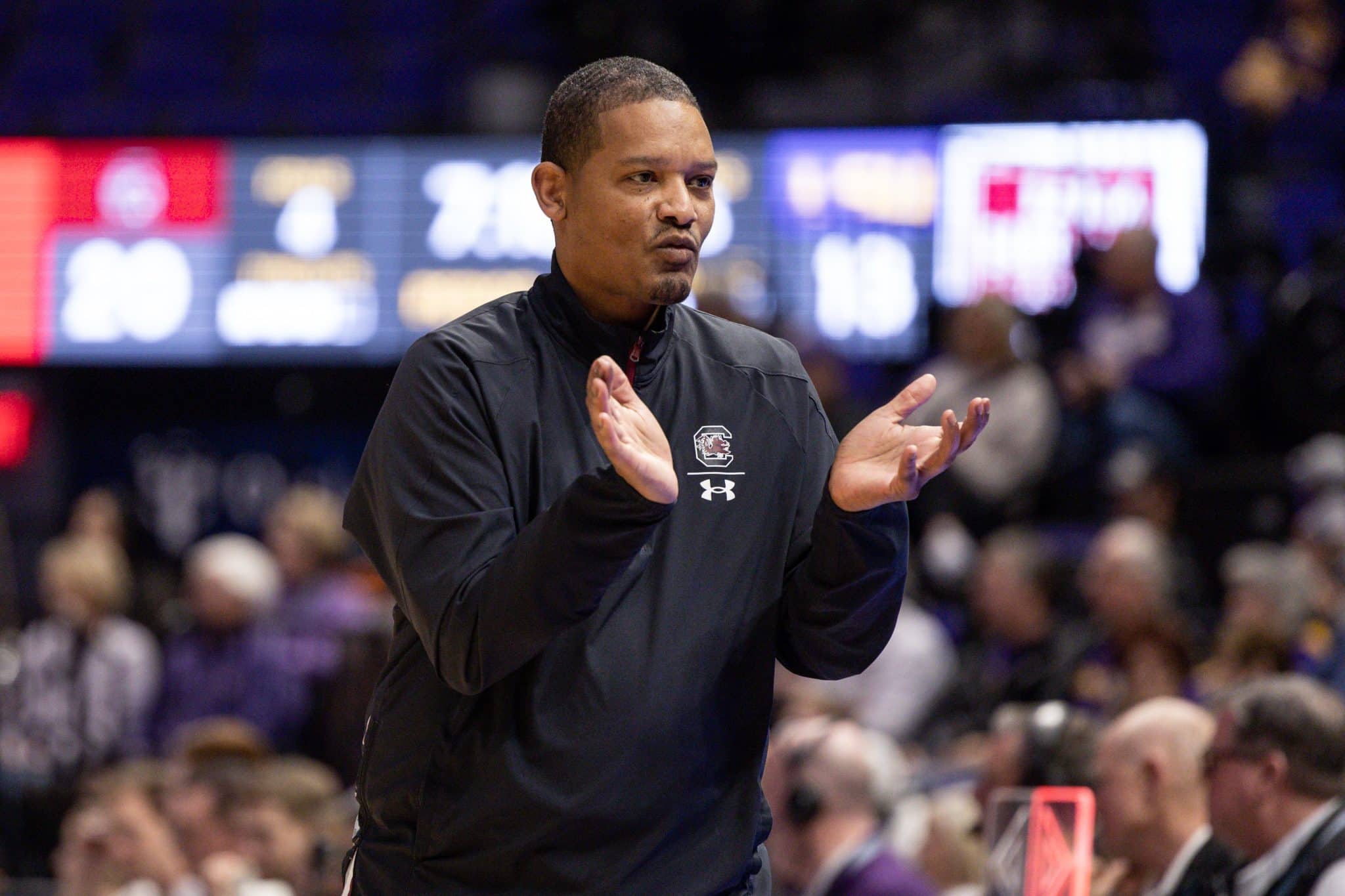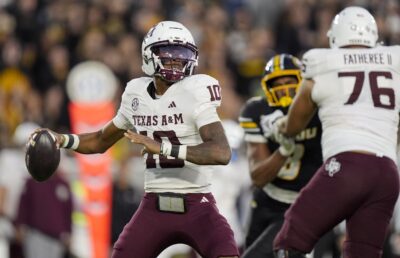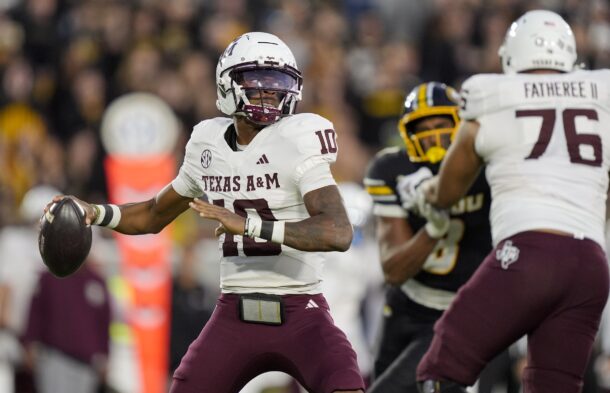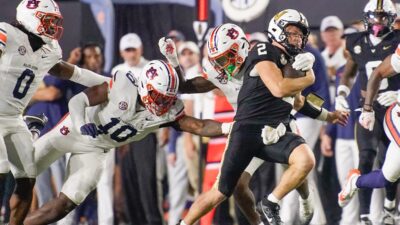
Can Alabama win a title with this dreadful ground game? Here’s what history says
If you’re holding your breath on Alabama finding a run game, stop. Seriously. Stop, exhale and get some much-needed oxygen instead of passing out in hopes that “Joyless Murderball” is resurfacing in Tuscaloosa anytime soon.
We’re in the third weekend of November and we’re still waiting on Alabama to hit 4.0 yards per carry against a Power Conference team. Louisiana-Monroe was the only team who allowed Alabama to hit that mark, which is ironic when you consider that this will likely be the worst Alabama run game since the Tide lost to Louisiana-Monroe in Year 1 of the Nick Saban era back in 2007.
Actually, check that. I know that’s usually the default answer for any sort of bad Alabama stat, but it’s not in this case.
Through 9 games, 2025 Alabama squad averaged 111.9 rushing yards per game and 3.6 yards per carry, which still isn’t even sniffing the 2007 squad’s 149.2 rushing yards per game and 4.0 yards per carry.
Let’s take it back a little further.
The last time that the Tide had fewer yards per carry for an entire season was 2006, and the last time that Alabama had fewer rushing yards per game was in 1955. To recap, the last time Alabama had such little ground-game identity was 3 years before the Bear Bryant era began.
That 1955 squad was 0-10. Seventy years later, football has changed a touch. Hence, why the 2025 squad is 9-1 and a lock to make the College Football Playoff, even with that historically ineffective ground game. The question is no longer about whether the Tide can establish the run; it’s about whether Alabama can win a title with this bad of a ground game.
Sure, football has changed. It’s no secret that 21st century passing attacks are more advanced than their 20th century predecessors, which is why we’re even asking this question about 2025 Alabama.
But this would be a historically dreadful ground game among 21st century national champions
Go back to the first 25 national champs of the 21st century and you’ll see what I mean:
- 2000 Oklahoma: 134.6 rushing yards/game, 3.9 yards/carry
- 2001 Miami (FL): 204.6 rushing yards/game, 5.3 yards/carry
- 2002 Ohio State: 191.3 rushing yards/game, 4.3 yards/carry
- 2003 LSU: 185.7 rushing yards/game, 4.4 yards/carry
- 2003 USC: 155.9 rushing yards/game, 4.5 yards/carry
- 2004 USC: 177.4 rushing yards/game, 4.7 yards/carry
- 2005 Texas: 274.9 rushing yards/game, 5.9 yards/carry
- 2006 Florida: 160.0 rushing yards/game, 4.7 yards/carry
- 2007 LSU: 214.1 rushing yards/game, 4.9 yards/carry
- 2008 Florida: 231.1 rushing yards/game, 5.9 yards/carry
- 2009 Alabama: 215.1 rushing yards/game, 5.0 yards/carry
- 2010 Auburn: 284.8 rushing yards/game, 6.1 yards/carry
- 2011 Alabama: 214.5 rushing yards/game, 5.5 yards/carry
- 2012 Alabama: 227.5 rushing yards/game, 5.6 yards/carry
- 2013 Florida State: 203.1 rushing yards/game, 5.6 yards/carry
- 2014 Ohio State: 264.5 rushing yards/game, 5.7 yards/carry
- 2015 Alabama: 199.9 rushing yards/game, 4.7 yards/carry
- 2016 Clemson: 170.3 rushing yards/game, 4.3 yards/carry
- 2017 Alabama: 250.6 rushing yards/game, 5.7 yards/carry
- 2018 Clemson: 249.3 rushing yards/game, 6.6 yards/carry
- 2019 LSU: 167.3 rushing yards/game, 4.9 yards/carry
- 2020 Alabama: 183.6 rushing yards/game, 5.0 yards/carry
- 2021 Georgia: 191.2 rushing yards/game, 5.3 yards/carry
- 2022 Georgia: 205.3 rushing yards/game, 5.5 yards/carry
- 2023 Michigan: 169.1 rushing yards/game, 4.5 yards/carry
- 2024 Ohio State: 166.4 rushing yards/game, 5.0 yards/carry
- 2025: TBD
(Just in case you were curious, 1999 Florida State won it all after it only averaged 3.4 yards/carry, but to find a national champ who averaged less than 111.9 rushing yards/game, you had to go all the way back to … never. At least there weren’t any such examples for a national champion dating back to 1936. That 1999 FSU team had the fewest rushing yards/game of any national champ at 122.8.)
To nobody’s surprise, none of those 21st century national champs had 111.9 rushing yards/game and 3.6 yards/carry. Go figure that the team with the least amount of ground game production and efficiency among that group was 2000 Oklahoma, who was led by current Tennessee coach Josh Heupel. That team won the BCS National Championship in a 13-2 victory against Florida State, wherein the Sooners had just 36 carries for 56 yards. Heupel threw the ball 39 times and essentially followed the same pass-run balance that OU had all season.
(Some would argue that FSU didn’t deserve to be in that game after losing to fellow 1-loss team Miami, and that the BCS computers were the only thing that prevented the Hurricanes from playing, and likely winning, the national championship, but now isn’t the time to re-litigate that.)
Of those 25 national champs, 15 of them averaged 5.0 yards per carry and 2000 Oklahoma was the lone winner to average less than 150 rushing yards per game. Alabama would need to average 200 rushing yards over the next 7 games to finish with a season average of 150, which seems next to impossible considering the 9-game sample size that we’ve already seen.
Whether you want to put the blame on Ryan Grubb’s play-calling in the Kalen DeBoer offense, the offensive line or the backfield, there are clearly multiple factors for something that’s become an atypical question to ask of the Tide.
Why can’t Alabama run the ball?
“Oof. Can’t (run the ball). Not like, why haven’t they, can they get it done? They can’t run the football at all,” said former LSU running back and 2007 national champion Jacob Hester, who watched the Tide in person last Saturday night in Tuscaloosa. “Their tight ends are struggling a little bit on the edge. Their offensive line is good enough. They’re not the road-graders that they’ve had. Their running backs’ vision is just poor right now. It just is. I hate talking about my own position like that.
“When a run play in the SEC gives you 4, you take 4, you don’t look for 40. It looks like they’re looking for 40 right now … can you change that? Maybe. It’s kinda tough.”
The numbers back that up. It’s not just that Alabama ranks No. 120 in FBS in both rushing yards/game and yards/carry with just 32 attempts per game (No. 109 in FBS). Of the Tide’s 282 rushing attempts, only 1 went for a 30-yard gain … and it was a 56-yard run by true freshman AK Dear in the final minute of a 73-0 win vs. Louisiana-Monroe. There are 13 FBS teams without multiple runs of 30 yards, and Alabama is one of them. Nobody else in that group is a Power Conference team with a winning record. Mind you, that’s a year removed from Alabama leading the SEC with 13 runs of 30 yards, albeit with Jalen Milroe and Justice Haynes, who transferred to Michigan and is now leading Power Conference players with 122.4 rushing yards/game.
Alabama obviously has found a way to overcome those ground game issues in the form of Ty Simpson. When your quarterback is playing at a Heisman Trophy level, it can allow you to do things like beat 4 consecutive AP Top 25 teams without a bye/extra rest for the first time in SEC history, or have the most wins vs. the top 40 of the Sagarin ratings of anybody in the sport (H/T Chris Fallica). Simpson has been everything and then some.
He’s also Alabama’s leader with 13 missed tackles forced as a runner. Not only is Simpson the leader there, but he’s the only Tide player with double-digit missed tackles forced. Just for a little perspective, Kewan Lacy and Ahmad Hardy lead the SEC with 71 and 65 missed tackles forced, respectively. Alabama starting running back Jam Miller, who has battled multiple injuries this season, has 9 missed tackles forced, which ranks No. 33 among SEC players. On the season, Alabama has forced 49 missed tackles in the run game — that’s tied for 12th in the SEC — and nearly half of them (23) have come from non-running backs. Swiss army knife Germie Bernard is 2 away from Miller, and he only has 15 rushing attempts all season.
Perhaps that speaks a bit to Grubb’s willingness to at least try some alternative options in the ground game. Alabama did turn to Bernard to execute a misdirection play for the go-ahead touchdown at South Carolina.
We could expect to see more of Bernard out of the backfield, and maybe even some more William “Refrigerator” Perry-type involvement with 360-pound Kadyn Proctor in short-yardage situations.
But while those unconventional elements can provide a spark, it does feel strange that Alabama can’t truly lean on teams to close a game. The numbers reflect that, too. Simpson leads FBS with 780 passing yards while leading by 1-7 points. Heading into Week 12, Simpson has 61 pass attempts in the 4th quarter, which is a stark contrast from the 2018 Alabama squad that watched Tua Tagovailoa not have to attempt a 4th quarter pass attempt until November.
Times have changed. So, too, has Alabama. Is that for better or for worse? Time will tell.
What’s clear is that if Alabama does wind up as the last team standing, it’ll be the first national champ of its kind. It’d be an ironic pivot from the Saban era, and possibly a sometimes frustrating identity to accept.
But something tells me that if Alabama’s run-game issues don’t stand in the way of a title, that identity will be welcomed with open arms.
Connor O'Gara is the senior national columnist for Saturday Down South. He's a member of the Football Writers Association of America. After spending his entire life living in B1G country, he moved to the South in 2015.
